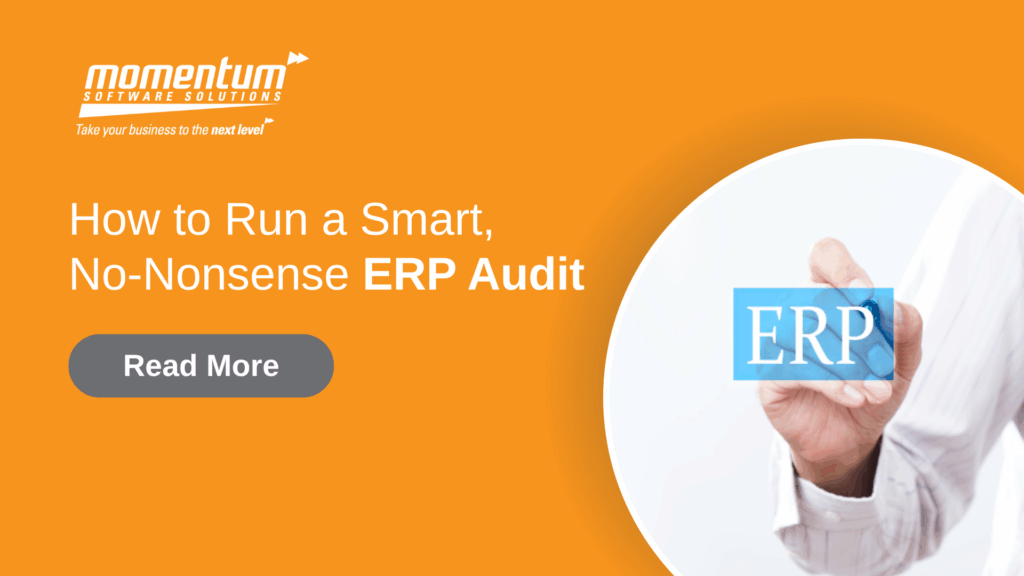ERP systems are the central nervous system of your business. But how do you know yours is still pulling its weight? That’s where an Enterprise Resource Planning (ERP) audit comes in, a strategic check-up to spot gaps, reduce risk, and surface opportunities for smarter, smoother operations.
What’s an ERP Audit, Really?
Think of it as a reality check. An ERP audit assesses whether your systems, data, and processes still align with how your business runs today. It’s not just about ticking boxes, it’s about asking, “Is this still fit for purpose?”.
Start with Why: What’s the Goal?
Don’t dive in without a plan. ERP systems touch everything, finance, ops, inventory, procurement. Define your focus. Are you chasing compliance, tightening processes, or exploring system performance? Clarity upfront sets the tone for the whole audit.
Choose Your Audit Path
1. Compliance Check
Are users following the rules or just the workaround? Watch what actually happens on the floor and compare it to documented procedures. Spotting gaps might reveal outdated policies or training needs.
2. Process Audit
Want to cut waste or reduce bottlenecks? Pick a process say, purchase orders and follow it from request to delivery. Are approval limits enforced in your ERP? Are inventory purchases tied to actual demand?
The aim: make sure the system supports how things should work, not just how they do.
3. Risk Audit
Risk lives in the detail. Under the Corporations Act and industry-specific guidelines (like ASIC or APRA), your ERP should support not sabotage compliance.
Audit from the bottom up: Who can create or approve transactions? Are controls built into the system, or just assumed? Does the system steer users toward best-practice decisions, or leave room for error?
A solid risk audit catches issues before they catch headlines.
4. System Audit
Great software needs the right tech behind it. Is your infrastructure up to scratch? Old hardware, slow load times, and flaky warehouse Wi-Fi can wreck productivity.
Benchmark system performance against business expectations, uptime, speed, device compatibility and flag anything that’s falling short.
5. Security Audit
Who has access to what? It should be need-to-know, not open season. Make sure roles and permissions reflect real-world responsibilities. Pay extra attention to mobile access and data exports, especially when staff move on.
6. Waste Audit
Use Lean principles to declutter your ERP:
- Overproduction: Excessive order quantities
- Waiting: Slow logins or batch jobs
- Transport: Manual workarounds
- Over-processing: Redundant approvals
- Inventory: Poor forecasting or posting
- Motion: Inefficient workflows
- Defects: Data entry errors
If it slows your team down, it’s costing you money.
7. ROI Reality Check
What did you expect from your ERP? Fewer errors? Faster reporting? Lower headcount? Measure what you got vs what you planned. If the ROI isn’t adding up, it’s time to dig into the why.
Build a Sharp Audit Team
Pick people who can spot flaws without bias ideally, folks outside the domain they’re auditing. A cross-functional team can uncover blind spots others might miss. Most importantly, give them the time, authority, and tools to do the job properly.
Audit Done? Time to Act.
A good audit isn’t just a report, it’s a springboard for change. Triage your findings:
- 🔴 Critical (fix ASAP): Security risks, compliance breaches
- 🟡 Medium (schedule fixes): Workflow delays, inefficiencies
- 🟢 Low (continuous improvement): Outdated docs, minor bugs
Assign owners, set deadlines, track progress and plan your next audit. ERP isn’t “set and forget” it should evolve with your business.
